Last year in July while camping at the Lower Lake of Red Rock Lakes National Refuge a storm came in while I was photographing birds at the dam. It looked like it was going to be a bad storm so I was going to head back to the campsite when a Peregrine Falcon swooped towards the American Avocets and Wilson’s Phalaropes.
 Before the storm, a Peregrine Falcon takes an American Avocet as prey
Before the storm, a Peregrine Falcon takes an American Avocet as prey
The Peregrine Falcon snatched an American Avocet right out of the shallow water and flew past me with it dangling from its talons. It all happened so quickly that I only got this one clear shot of the falcon.
I wondered if the falcon would come back so despite the impending arrival of the nasty looking storm I sat in the “mobile blind” to see if it would.
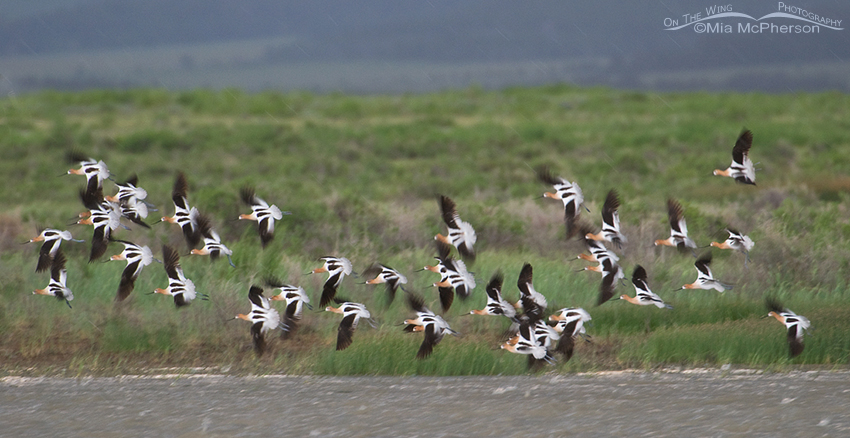 American Avocets in flight during a storm
American Avocets in flight during a storm
And the storm came in fast along with heavy rain and wind. These avocets were coming in to land in the shallow water.
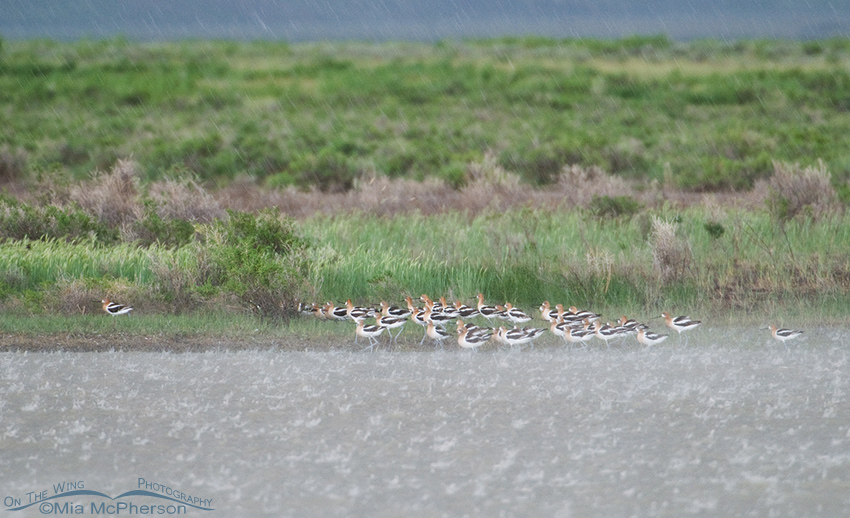 American Avocets in a hail storm
American Avocets in a hail storm
And shortly after the avocets landed the hail started. I had never wondered what birds do in a hail storm before that day. Larger hail must injure and possibly kill birds when it falls.
The pea sized hail was pounding on the top of the pickup and pelting the parts of my hands and arms that were partially out of the window to take these images. Rain blew in the window and dripped off of my Noodle lens rest and the lens coat covering on my lens was soaked too.
I processed this image different from I normally do, typically I only sharpen the bird and other items they might be standing on to perch, or vegetation close or in front of my subject but with this image I sharpened the entire frame to accentuate the streaks of falling rain.
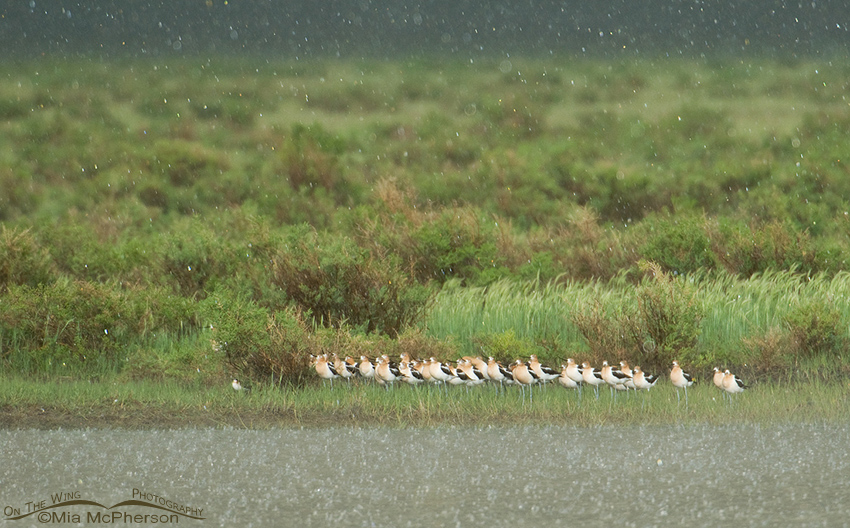 American Avocets facing the storm
American Avocets facing the storm
When the hail size became smaller the shorebirds seemed to perk up. The tiny bird in front of the Avocets is a Wilson’s Phalarope, there were more of them behind the bush the phalarope is in front of. The hail was still coming down hard.
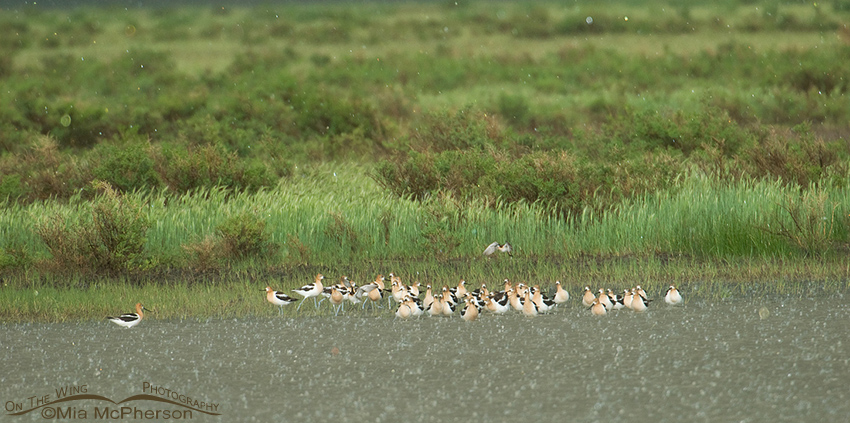 When the hail turns to rain – American Avocets
When the hail turns to rain – American Avocets
By this time the hail had turned to rain and the birds began moving around, a few of the phalaropes took to the air.
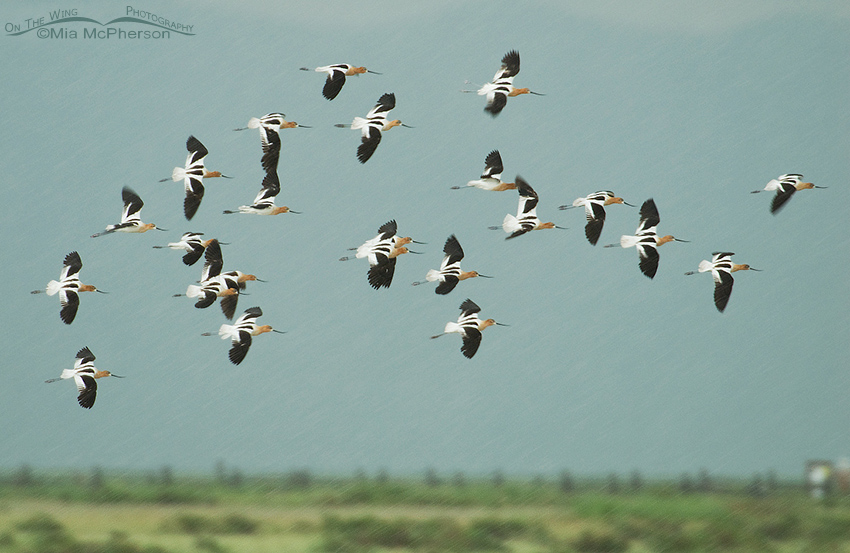 American Avocets flying in a driving rain
American Avocets flying in a driving rain
And the avocets soon followed. They have such a neat pattern on their backs. When I processed this I noticed that all of the avocets have their legs close together trailing behind them except the one at the top of the center towards the right whose legs are splayed out from each other. Just something odd I picked up on.
I also sharpened this whole frame to highlight the driving rain.
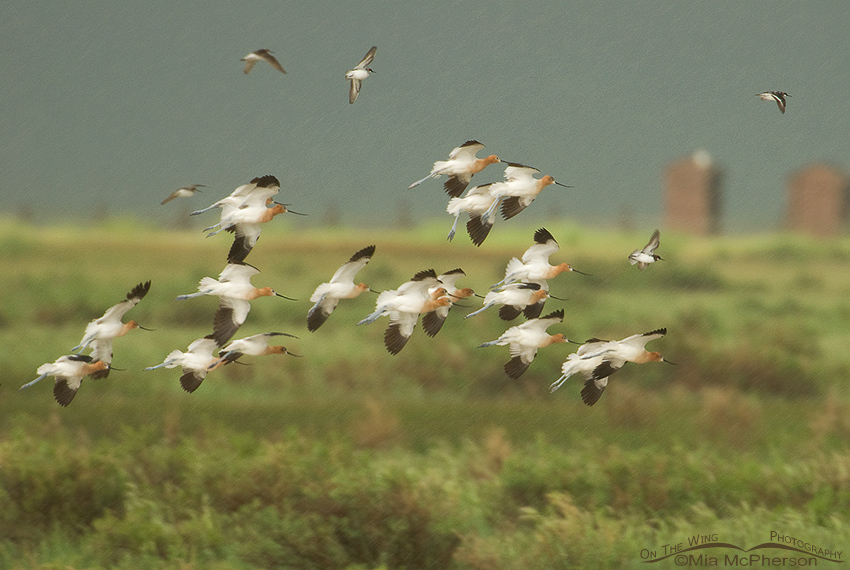 American Avocets and Wilson’s Phalaropes about to land in the rain
American Avocets and Wilson’s Phalaropes about to land in the rain
The avocets weren’t in flight long before they landed again and a few of the phalaropes landed with them. The avocets seemed to enjoy the lighter rain because they bathed and splashed in the shallows.
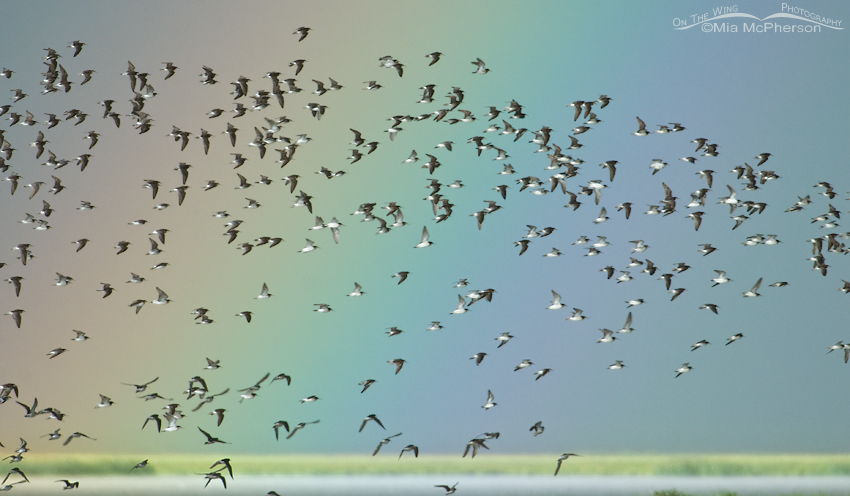 Wilson’s Phalaropes in flight in front of a rainbow
Wilson’s Phalaropes in flight in front of a rainbow
The phalaropes took off though flying back and forth in front of me, twisting and turning in flight. One second showed them flashing their white undersides and the next their darker top sides. As they flew the sun came out and a rainbow appeared. How great it was to photograph these birds with the colors of the rainbow behind them.
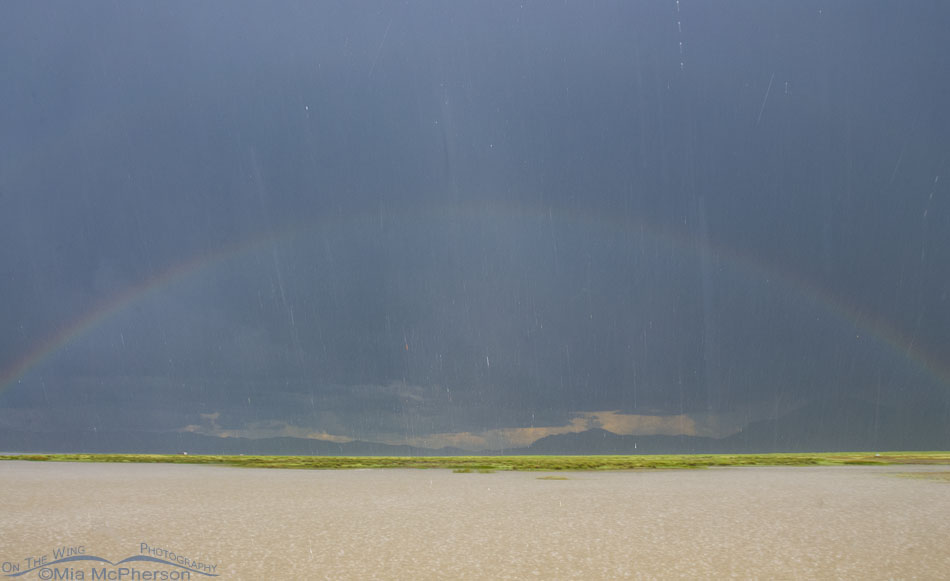 Red Rock Lakes NWR rainbow after a storm
Red Rock Lakes NWR rainbow after a storm
Since I began photographing birds in Florida I have gotten used to getting wet to photograph shorebirds, wringing wet at times but my gear has never been as wet as it was the day I took these images from inside the pickup. Was it worth it? I think so.
Life is good.
Mia
Click here to see more of my American Avocet photos plus facts and information about this species. Click here to see more of my Wilson’s Phalarope photos plus facts and information about this species.


Mia:
Definitely worth getting wet to get these images. I love the American Avocets flying in a driving rain shot.
Dave
Dave, I think it was worth getting wet too. Thank you for your kind comment.
your photos are amazing..we get a few Avocets here in the spring, but I have never seen them in flight. The whole series of photos is a real adventure in nature..
Thank you Syl!
This series is incredible Mia, amazing they aren’t seriously hurt from the hail. the rainbow shot is mouth agape stunning – love it
dan
Dan, I am amazed they weren’t hurt in that hail, it made me wince to watch them get pelted with it. Thanks so much for commenting!
All shots are great but #6 won my heart. What a fantastic pattern!
Thank you Maria, it was a magical experience
…whoa…..really cool post. I loved it all.
Thanks Kelly!
Love these shots, Mia. Especially the Avocets in flight. The challenging conditions produced some nice results. The bands of rainbow colours behind the Wilson’s Phalaropes are terrific.
Thank you Scott, I was very pleased with the rainbow colors behind the Phalaropes!
wonderfull serie, specialy under the storm, i like to shot under the rain when i have a oportunity too
see you
Thanks Eric, it was a terrific day, setting and subjects.
Ha! Certainly on our end it seems worth it! Great shots Mia.
Thank you Laurence!
Wonderful Mia. Neat formations and patterns and a bonus rainbow. Nature is so enthralling sometimes.
I agree Stu, nature is enthralling! Thanks for commenting.
What a fantastic tale of the American Avocet and Peregrine Falcom, and there are wonderful pictures to boot.
Thanks Bob, it was a magical day.
Well done Mia. Enjoyed your experience.
Thank you Earl, Red Rock Lakes is a super location.
What a great story and images to go along with it Mia. What a great bonus to have that rainbow at the end. I wish I had the opportunity to photograph avocets, they are such a beautiful bird.
Mark,
Thanks so much for comemnting on this post. Avocets are great subjects, they are so graceful and delicately colored. That rainbow was killer!